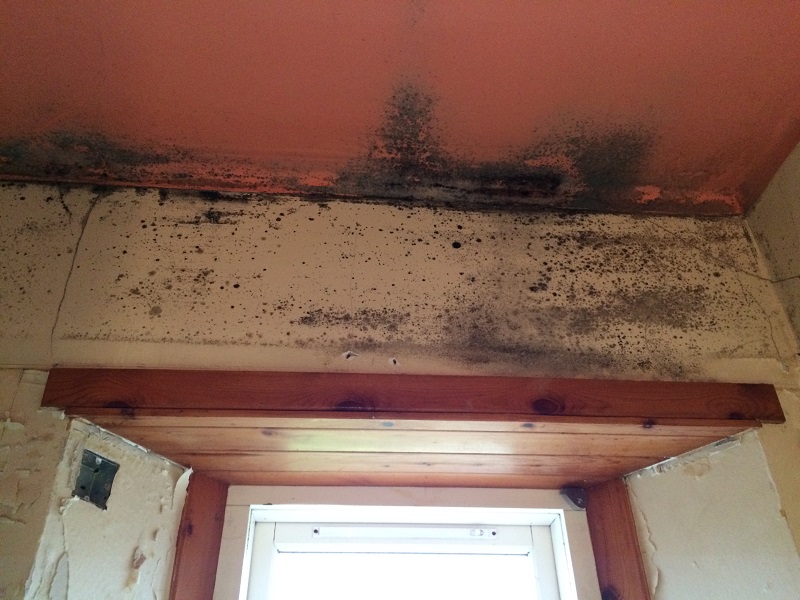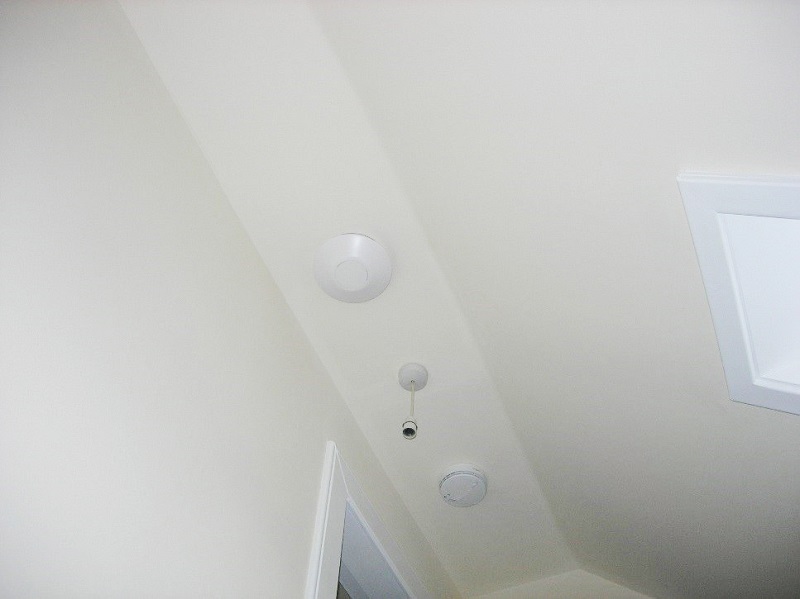What is condensation and how to prevent it in older buildings?
Maintenance | Written by: Moses Jenkins | Tuesday 29 November 2022
Condensation can be a problem in Scotland’s homes over winter. With people turning off or turning down their heating due to high energy costs, condensation will likely be more of a problem this winter.
Our Sector Skills Manager Moses Jenkins explains what condensation is in this blog. He shares some low-cost tips on keeping yourself and your home healthy in the colder months.
What is condensation?

This diagram shows the movement of moisture and air around a traditional building, with air entering through windows and sub floor vents and leaving through flues and the roof space taking internal moisture with it.
In a nutshell, condensation is the process where water vapour (a gas) turns back into liquid water.
In traditional (pre-1919) buildings, there are two main types of condensation: surface and interstitial condensation.
Surface condensation is the more obvious of the two. It happens when warm moist air comes into contact with a cold surface. You’ll most likely know it as condensation forming on windows, but it can happen in many other situations.
Interstitial condensation forms within building fabric (inside the structural materials the building itself is made up of, like the walls or floor). It happens when moisture enters this building fabric and then reaches a point where it’s too cold to exist as vapour and instead condenses into a liquid. This point is called the dew point.
When materials allow moisture to pass through and there’s enough heat, interstitial condensation can escape from the building fabric. But if the materials that have been used don’t allow moisture to pass through (like cement render), it’s more likely to build up in building fabric which could cause decay.
The impacts on our health and on our buildings

Mould growth and peeling plaster inside a building.
Condensation can lead to mould. Mould can have serious consequences for our health, in particular respiratory health. Damp and mould in your home means you’re more likely to have problems like asthma, allergies or respiratory infections.
What does condensation mean for the building itself? When condensation affects timber it can lead to decay in the form of wet rot, dry rot, or insect infestation. Plastered surfaces like walls can also be damaged by condensation.
Catastrophic events like plumbing leaks and blocked gutters grab our attention, but with a family of four potentially producing 7.6 litres of water in the home each day, if this moisture is allowed to condense and accumulate inside, that’s a significant amount of moisture!
Simple steps to reduce the risk of condensation

A Humidistat controlled extractor fan installed on a ceiling.
There are things you can do to help reduce the risk of condensation, and many of these are simple and low cost:
- if drying clothes inside, do it in in a well-ventilated part of the building if possible
- run extractor fans in kitchens and bathrooms during and after cooking and bathing
- open windows for short periods to let moist air out. Low-cost air quality monitors can tell you when to boost ventilation by opening a window
- make sure pathways for ventilation including subfloor vents and trickle vents are open
- if condensation is forming on windows, wipe them down regularly to reduce the risk of timber decay
- consider using a Humidistat controlled extractor fan
If you’re making changes to a building, you’ll also need to make sure any materials you’re using don’t impact ventilation or worsen condensation.
More help with condensation and related problems
Effectively managing condensation in traditional buildings is vital to the health of those living in a building, and to the building itself.
Understanding how and why it happens, taking all practical steps to reduce the amount of moisture internally and making sure buildings are well ventilated are critical to making sure condensation problems don’t spiral. Bigger problems down the line can be harder to repair – and more costly.
This guidance has more details on how you can manage condensation if you are a homeowner, or if you are looking to make changes to a building that could impact the levels of condensation:
- Condensation: Inform Guide
- Inform Guide: Mould Growth
- Inform Guide: Ventilation in Traditional Buildings
- Guide to Energy Retrofit of Traditional Buildings
- This online calculator from the UKCMIB can be a helpful tool calculate moisture balance
About the author:
Moses Jenkins
Dr Moses Jenkins is a Project Manager at HES. He is the author of a number of technical advice documents, including the HES Guide to Energy Retrofit and the book Survey and Assessment of Traditionally Constructed Brickwork.
View all posts by Moses Jenkins



